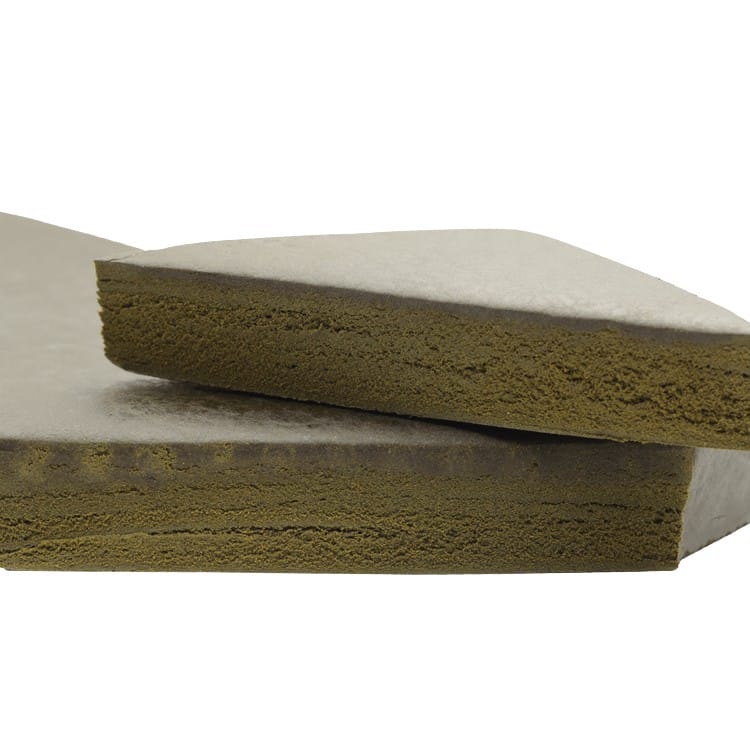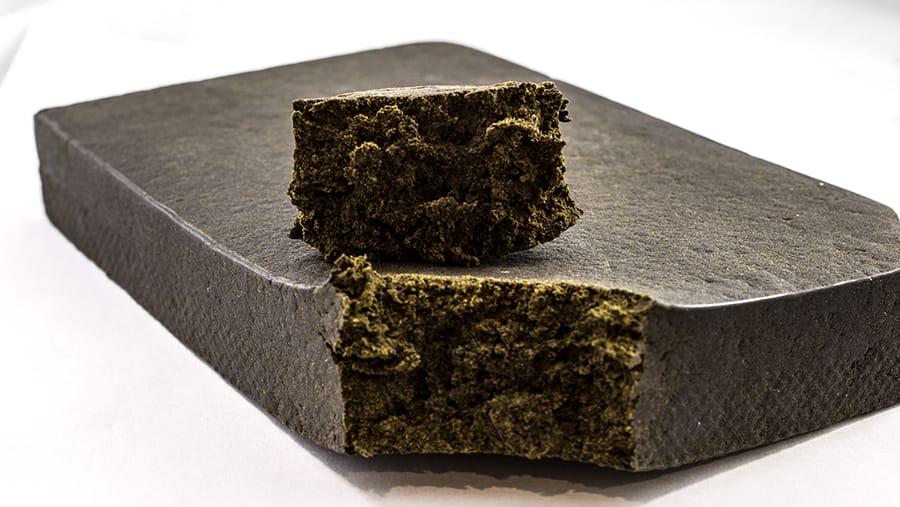The debate surrounding the relative safety of various recreational substances has long been a topic of discussion among health experts, policymakers, and users. Recent research suggests that hashish, commonly known as hash, stands out as a less harmful alternative compared to other recreational drugs.
This article explores hash’s benefits over other substances, emphasizing its potential advantages for health-conscious individuals. For wide access, order hash online Canada.
Table of Contents

Understanding Hashish
Hash is a concentrated form of cannabis made from the resinous glands (trichomes) found on the flowers and leaves of the cannabis plant. These trichomes are rich in cannabinoids, particularly THC (tetrahydrocannabinol) — which is responsible for the “high” or psychoactive effects of cannabis.
Hash comes in various forms with its unique properties and production methods, including:
| Type of Hash | Properties | Production Methods |
| Moroccan Hash | Texture: Soft and pliableColour: Light to dark brownAroma and Flavour: Spicy, earthy, sweet | Traditional hand-rolling techniquesDried and sifted cannabis plantsTrichomes collected and compressed |
| Afghan Hash | Texture: Sticky and resinous, sometimes firmColour: Dark brown to blackAroma and Flavour: Rich, spicy, earthy | Hand-pressing cannabis resinA small amount of tea or water is used for bindingSieved and compressed trichomes |
| Bubble Hash | Texture: Crumbly to sticky, resinousColour: Light blond to golden brownAroma and Flavour: Clean, pure, strain-specific | Ice water extraction methodAgitation in ice water to separate trichomesFiltration through micron screens |
| Lebanese Hash | Texture: Soft and malleableColour: Red or yellow | Sun-dried cannabis plantsSifting and compressing trichomesProlonged curing process for several months |
Experts Claim Hash is Less Harmful Than Any Other Drug
A former government adviser on drug policy has asserted that traditional “hash” varieties of cannabis are among the least harmful drugs available.
Appearing on Channel 4’s Drugs Live program, Professor David Nutt, a neuropsychopharmacology expert at Imperial College London, explained that “hash” is less harmful than tobacco, alcohol, ketamine, methadone, and many other substances.
Professor Nutt emphasized the need to differentiate between traditional cannabis varieties like hash and newer, stronger types known as ‘skunk.’ According to him, while ‘skunk’ is about one-third as dangerous as alcohol, hash ranks as the least harmful drug of all.
He was dismissed from his role as the government’s chief advisor on drugs for opposing policies that deemed cannabis more dangerous than alcohol or tobacco. On Drugs Live, he proposed moving hash to the bottom of the harm index, placing it as safer than heroin, crack, meth, cocaine, tobacco, amphetamine, GHB, benzodiazepines, ketamine, and methadone.
The Drugs Live broadcast coincided with Deputy Prime Minister Nick Clegg’s announcement that the Lib Dems would shift government drug policy oversight to the Department of Health.
Why Experts Recommend Hash
Lower Harm Potential
Hash stands out as a safer option for health-conscious users due to its lower harm potential compared to many other substances.
Researchers developed a nine-category matrix to assess drug harms, including both illicit and legal drugs like alcohol, khat, solvents, alkyl nitrites, tobacco, and ketamine. This study found significant discrepancies between its harm rankings and current regulatory classifications, suggesting that a more systematic framework could improve harm assessment globally.
Key Findings from Harm Assessment
The study, titled “Development of a Rational Scale to Assess the Harm of Drugs of Potential Misuse,” ranked drugs based on physical harm, dependency potential, and social harm. Here are some key insights:
- Alcohol: High harm due to widespread use, addiction potential, and significant social and health impacts.
- Heroin: High harm rating because of extreme dependency potential and severe health risks.
- Cocaine: Noted for its high physical harm and dependency potential.
Reduced Health Risks
Hash is consumed in smaller quantities due to its potency, reducing the intake of harmful substances associated with smoking large amounts of plant material. Methods such as dabbing hash, using a dab rig, or vaporizing can further minimize exposure to combustion-related toxins.
Lower Dependency Potential
Hash has a lower dependency potential compared to many other substances. While it contains THC, which can lead to psychological dependence, it is generally less addictive than alcohol, heroin, and cocaine.
Minimal Social Harm
The social harm associated with hash is considerably lower than that of alcohol or harder drugs. Hash use does not lead to aggressive or risky behaviours often linked to alcohol consumption.
Controlled Cannabinoids Content
As a cannabis concentrate, hash offers a higher concentration of cannabinoids, particularly THC. This allows you to achieve desired effects with smaller amounts, which can be healthier than smoking larger quantities of cannabis buds or dried flowers.
How to Consume Hashish?
Smoking Hash
Smoking hashish is one of the most common methods. You can smoke hash in various ways:
- Joint: Mixed with cannabis flower or tobacco.
- Pipe: Heated evenly, often with a screen to prevent plant material from being inhaled.
- Bong: Provides a smoother smoking experience by filtering the smoke through water.
Dabbing Hash
Dabbing involves using a specialized pipe known as a dab rig to heat the hash until it vaporizes. This method is considered more efficient and can deliver more potent effects with less material.

Buy Hash Online Products
| Product | Description | Effects |
| Captain’s Pink Hash | Domestically made hash with imported style. Offers a general sense of well-being and light buzz. | Pain relief, combat nausea |
| Gevalia Hash | Hand-pressed hash with a medium to hard texture, softening when warmed. Crafted from small, bushy Indicas and pressed with the addition of tea or water. | Pain relief, euphoria |
| Rolls Royce Hash | Quality hand-pressed hash from Vancouver, characterized by a strong piney aroma and taste. Average THC content of 30%. | Long-lasting, daytime relaxation, anxiety management |
Tips for Health-Conscious Users
- Begin with a small amount of hashish, especially if you are new to using concentrates. Gradually increase your dosage as needed.
- Choose the best hash Canada products from reputable sources that use safe production methods and test their products for purity and potency.
- When smoking or vaporizing hashish, use clean and well-functioning equipment to ensure a smooth and enjoyable experience.
- Explore alternative consumption methods such as vaporizing, dabbing, or incorporating hashish into edibles for a smoke-free option.
- Understand your tolerance level and avoid consuming more hashish than your body can handle.
- Stay hydrated if you experience dry mouth or throat after consuming hashish.
- Give your body time to rest and recover between hashish sessions to prevent tolerance buildup and potential adverse effects.
The Key Takeaway
For health-conscious users seeking a safer alternative to other recreational substances, hash offers a compelling option. Supported by findings from comprehensive harm assessment studies, hash provides lower dependency potential, reduced physical and social harm, and versatile consumption methods.
With convenient online ordering and discreet delivery, buying hash online has never been easier. Explore our collection of hashish, cannabis concentrates, and other cannabis products to find the perfect option for your needs. Order Hash Online Canada today at GrassLife.
Frequently Asked Questions
What Sets Hashish Apart From Marijuana?
Hashish and marijuana both originate from the Cannabis sativa plant, the same source of marijuana and hemp. Marijuana refers to the entire cannabis plant, or specifically its flowers, valued for its relaxing and psychoactive properties.
Hashish, on the other hand, is derived from extracting and compressing resin from marijuana flowers. It contains a higher THC concentration than marijuana due to its extraction process and concentrates cannabinoids.
In terms of effects, hashish is notably stronger than marijuana as it concentrates the plant’s resin, resulting in more potent effects.
What Are the Typical THC Levels Found in Hashish?
Hashish has significantly higher THC content, ranging from 40% to over 60%, depending on the extraction method. CBD hashish, however, contains more CBD than THC. Hashish contains minimal fibres and plant debris, unlike marijuana.
How Can You Tell if Hashish Is Good?
The main concern with hashish, especially when its origin is unknown, is the risk of contamination with harmful substances like tar, plastics, or even tires, often added by the black market to increase profit.
To ensure quality, consider these factors:
- Colour: Good hashish has brownish tones, with light brown indicating light pressing and minimal mixing. Dark brown plates may indicate heavy pressing but aren’t necessarily bad. Greenish hues suggest vegetable residues and should raise suspicion.
- Texture: High-quality hashish should be rigid yet crumble easily, especially with heat. It should be free of foreign pieces or debris.
- Aroma: Hashish has a distinct resinous smell. Any unusual or absent odour is a red flag.
- Flame Test: When burned, quality hashish bubbles produce light, aromatic smoke. Dark smoke signals lower quality.
- Taste: While flavours vary, hashish shouldn’t excessively irritate the throat or have industrial or plastic-like tastes.
- Effects: Expect hashish to deliver characteristic effects. Poor-quality hashish may cause headaches, unusual effects, or little to no noticeable impact.
Low-quality hashish can contain contaminants like dirt or oils and pose health risks. Ensuring proper processing is necessary to avoid contamination. Despite its potency, using caution with all forms of cannabis is wise.



